1mg
Showing 3701–3750 of 3770 results
-
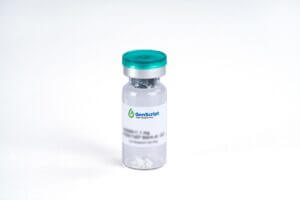
TECK/CCL25, Human
$2,190.75 Add to cart View Product DetailsCCL25 (thymus expressed chemokine) is a novel CC chemokine that is distantly related (approximately 20% amino acid sequence identity) to other CC chemokines. Mouse CCL25 cDNA has also been cloned and shown to encode a 144 aa protein that exhibits 49% aa sequence identity to human CCL25. The expresssion of human and mouse CCL25 was shown to be highly restricted to the thymus and small intestine. Although dendritic cells have been demonstrated to be the source of CCL25 production in the thymus, dendritic cells derived from bone marrow do not express CCL25.
-

Teriflunomide-d4
$190.61 Add to cart View Product DetailsMolecular Formula : C12 2H4 H5 F3 N2 O2
-
![tert-Butyl 2-[4-(2-Fluorophenyl)-6-methylthieno[2,3-d]pyrimidin-2-ylamino]acetate](https://advatechgroup.com/wp-content/uploads/xsys-masterimagesh20h7a10621020176414B691790-300x179.png.pagespeed.ic.smLpHbw12E.png)
tert-Butyl 2-[4-(2-Fluorophenyl)-6-methylthieno[2,3-d]pyrimidin-2-ylamino]acetate
$88.84 Add to cart View Product DetailsMolecular Formula : C19 H20 F N3 O2 S
-

tert-Butyl 3-((((R)-1-Amino-1-oxobutan-2-yl)amino)methyl)hexanoate-d7
$144.04 Add to cart View Product DetailsMolecular Formula : C15 D7 H23 N2 O3
-
![tert-Butyl-7-[4-(4-fluorophenyl)-6-isopropyl-2-mesylaminopyrimidin-5-yl]-(3R,5S)-dihydroxy-(E)-6-heptenoate](https://advatechgroup.com/wp-content/uploads/sys-masterimageshb8h1110621018538014B691758-300x152.png)
tert-Butyl-7-[4-(4-fluorophenyl)-6-isopropyl-2-mesylaminopyrimidin-5-yl]-(3R,5S)-dihydroxy-(E)-6-heptenoate
$154.39 Add to cart View Product DetailsMolecular Formula : C25H34FN3O6S
-

tert-Butyldimethylsilyloxy-5-aza-2′-deoxycytidine
$214.76 Add to cart View Product DetailsMolecular Formula : C25 H34 O4
-
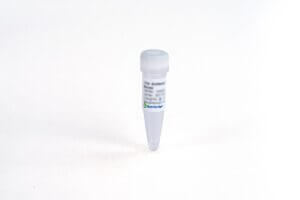
Testosterone Antibody (7B7HC)
$230.29 Add to cart View Product DetailsTestosterone
is an important sex hormone in males. It is synthesized in the body from
cholesterol. Testosterone is critical for the development of male
reproductive tissues. It also regulates sexual development and red blood cell
production. -

Testosterone Antibody (8A4HC)
$230.29 Add to cart View Product DetailsTestosterone
is an important sex hormone in males. It is synthesized in the body from
cholesterol. Testosterone is critical for the development of male
reproductive tissues. It also regulates sexual development and red blood cell
production. -

TFF3, Human
$2,018.25 Add to cart View Product DetailsThe Trefoil Factor peptides (TFF1, TFF2 and TFF3) are secreted in the gastrointestinal tract, and appear to play an important role in intestinal mucosal defense and repair. TFF-3 is expressed by goblet cells and in the uterus, and has also been shown to express in certain cancers, including colorectal, hepatocellular, and in biliary tumors. TFF3 may be useful as a molecular marker for certain types of cancer, but its role, if any, in tumorigenesis is unknown. TFF3 also promotes airway epithelial cell migration and differentiation.
-

TGF-α, Human
$836.63 Add to cart View Product DetailsTransforming Growth Factor-alpha (TGF-α) , also known as sarcoma growth factor, TGF-type I and ETGF, is a member of the EGF family of cytokines. It is expressed in monocytes, brain cells, keratinocytes and various tumor cells. TGF-α signals through EGFR and acts synergistically with TGF-beta to promote the proliferation of a wide range of epidermal and epithelial cells. TGF-α is a transforming growth factor that is a ligand for the epidermal growth factor receptor, which activates a signaling pathway for cell proliferation, differentiation and development. This protein may act as either a transmembrane-bound ligand or a soluble ligand. The biological actions of TGF-α and EGF are similar. For instance, TGF-α and EGF bind to the same receptor. When TGF-α binds to EGFR it can initiate multiple cell proliferation events.
-

TGF-β 1, Mouse
$2,876.44 Add to cart View Product DetailsTransforming growth factor beta 1 (TGFβ1) is the prototype of a growing superfamily of peptide growth factors and plays a prominent role in a variety of cellular processes, including cell-cycle progression, cell differentiation, reproductive function, development, motility, adhesion, neuronal growth, bone morphogenesis, wound healing, and immune surveillance. TGF-β1, TGF-β2 and TGF-β3 signal via the same heteromeric receptor complex, consisting of a ligand binding TGF-β receptor type II (TβR-II), and a TGF-β receptor type I (TβR-I). Signal transduction from the receptor to the nucleus is mediated via SMADs. TGF-β expression is found in cartilage, bone, teeth, muscle, heart, blood vessels, hematopoietic cells, lung, kidney, gut, liver, eye, ear, skin, and the nervous system.
-

TGF-β 2, Human
$2,876.44 Add to cart View Product DetailsTransforming growth factor beta-2 (TGF-β2) is a secreted protein which belongs to the TGF-beta family. It is known as a cytokine that performs many cellular functions and has a vital role during embryonic development. The precursor is cleaved into mature TGF-beta-2 and LAP, which remains non-covalently linked to mature TGF-beta-2 rendering it inactive. It is an extracellular glycosylated protein. It is known to suppress the effects of interleukin dependent T-cell tumors. Defects in TGFB2 may be a cause of non-syndromic aortic disease (NSAD).
-

TGF-β 2, Mouse
$2,876.44 Add to cart View Product DetailsTransforming growth factor beta 2 (TGF-β2) is a member of TGF-beta superfamily that shares a characteristic cysteine knot structure. Mice with TGF-β2 gene deletion show defects in development of cardiac, lung, craniofacial, limb, spinal column, eye, inner ear and urogenital systems. All TGF-β isoforms signal via the same heteromeric receptor complex, consisting of a ligand binding TGF-β receptor type II (TβR-II), and a TGF-β receptor type I (TβR-I). Signal transduction from the receptor to the nucleus is mediated via SMADs. TGF-β expression is found in cartilage, bone, teeth, muscle, heart, blood vessels, hematopoietic cells, lung, kidney, gut, liver, eye, ear, skin, and the nervous system.
-

TGF-β 3, Human
$2,876.44 Add to cart View Product DetailsTransforming growth factor beta 3(TGFB3) is a member of a TGF -β superfamily which is defined by their structural and functional similarities. TGFB3 is secreted as a complex with LAP. This latent form of TGFB3 becomes active upon cleavage by plasmin, matrix metalloproteases, thrombospondin -1, and a subset of integrins. It binds with high affinity to TGF- β RII, a type II serine/threonine kinase receptor. TGFB3 is involved in cell differentiation, embryogenesis and development. It is believed to regulate molecules involved in cellular adhesion and extracellular matrix (ECM) formation during the process of palate development. Without TGF-β3, mammals develop a deformity known as a cleft palate.
-
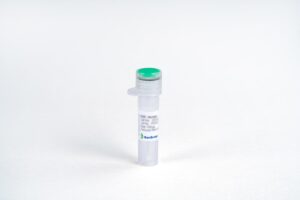
TGF-β1, Human
$2,876.44 Add to cart View Product DetailsTGF-β1 (transforming growth factor beta 1) is one of three closely related mammalian members of the large TGF-β1 superfamily that share a characteristic cystine knot structure. TGF-β1, -2 and -3 are highly pleiotropic cytokines that act as cellular switches to regulate processes such as immune function, proliferation and epithelial-mesenchymal transition. Each TGF-β isoform has some non-redundant function; for TGF-β1, mice with targeted deletion show defects in hematopoiesis and endothelial differentiation and died of overwhelming inflammation. TGF-β1 signaling begins with high-affinity binding to a type II ser/thr kinase receptor termed TGF-β RII. This receptor then phosphorylates and activates a second ser/thr kinase receptor, TGF-β RI (also called activin receptor‑like kinase (ALK)-5), or alternatively, ALK-1. This complex phosphorylates and activates Smad proteins that regulate transcription.
-

TGFβ1, Bovine
$2,742.75 Add to cart View Product DetailsTGF-β1 (transforming growth factor beta 1) is one of three closely related mammalian members of the large TGF-β1 superfamily that share a characteristic cystine knot structure. TGF-β1, -2 and -3 are highly pleiotropic cytokines that act as cellular switches to regulate processes such as immune function, proliferation and epithelial-mesenchymal transition. Each TGF-β isoform has some non-redundant function; for TGF-β1, mice with targeted deletion show defects in hematopoiesis and endothelial differentiation and died of overwhelming inflammation. TGF-β1 signaling begins with high-affinity binding to a type II ser/thr kinase receptor termed TGF-β RII. This receptor then phosphorylates and activates a second ser/thr kinase receptor, TGF-β RI (also called activin receptor‑like kinase (ALK)-5), or alternatively, ALK-1. This complex phosphorylates and activates Smad proteins that regulate transcription.
-

threo-Dihydro Bupropion Hydrochloride
$72.45 Add to cart View Product DetailsMolecular Formula : C13 H20 Cl N O . HCl
-
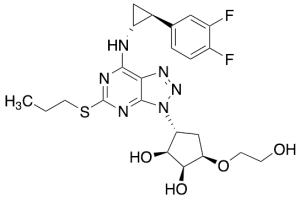
Ticagrelor Epimer
$244.95 Add to cart View Product DetailsMolecular Formula : C23 H28 F2 N6 O4 S
-

TIGIT, His, Human
$1,293.75 Add to cart View Product DetailsT cell immunoreceptor with Ig and ITIM domains (TIGIT) is an immune receptor present on some T cells and natural killer cells (NK). This protein could bind to CD155 (PVR) with high affinity, which causes increased secretion of IL-10 and decreased secretion of IL-12B and suppresses T-cell activation by promoting the generation of mature immunoregulatory dendritic cells. TIGIT could also bind to CD112 (PVRL2) with lower affinity. TIGIT’s inhibition of NK cytotoxicity can be blocked by antibodies against its interaction with PVR and the activity is directed through its ITIM domain.
-

TIM-3 Fc Chimera, Human
$1,293.75 Add to cart View Product DetailsT cell Ig- and mucin-domain-containing molecules (TIMs) are a family of transmembrane proteins expressed by various immune cells. TIM-3 is an inhibitory molecule that is induced following T cell activation. TIM-3 is expressed by exhausted T cells in the settings of chronic infection and cancer, and tumor-infiltrating T cells that co-express PD-1 and TIM-3 exhibit the most severe exhausted phenotype. Tumor-infiltrating dendritic cells also express TIM-3. TIM-3 expression on DCs was found to suppress innate immunity by reducing the immunogenicity of nucleic acids released by dying tumor cells. Research studies show that heterodimerization of TIM-3 with CEACAM-1 is critical for the inhibitory function of TIM-3, and co-blockade of TIM-3 and CEACAM-1 enhanced antitumor responses in a mouse model of colorectal cancer. Its binding to Galectin-9 induces a range of immunosuppressive functions which enhance immune tolerance and inhibit anti-tumor immunity. TIM-3 ligation attenuates CD8+ and Th1 cell responses and promotes the activity of Treg and myeloid derived suppressor cells. In addition, dendritic cell-expressed TIM-3 dampens inflammation by enabling the phagocytosis of apoptotic cells and the cross-presentation of apoptotic cell antigens.
-

TNF-α (80-235aa), Mouse
$1,323.94 Add to cart View Product DetailsTumor Necrosis Factor-Alpha (TNF-alpha) plays a major role in growth regulation, differentiation, inflammation, viral replication, tumorigenesis, and autoimmune disease. Besides inducing hemorrhagic necrosis of tumors, TNF has been found to be involved in tumorigenesis, tumor metastasis, viral replication, septic shock, fever, inflammation, and autoimmune diseasesuch as Crohn’s disease, rheumatoid arthritis and graft-versus-host disease. TNF alpha-1a is a potent lymphoid factor that exerts cytotoxic effects on a wide range of tumor cells and certain other target cells.
-

TNF-α, Bovine
$1,323.94 Add to cart View Product DetailsTumor Necrosis Factor-Alpha (TNF-α) plays a major role in regulating growth, differentiation, inflammation, viral replication, tumorigenesis, and autoimmune diseases. TNF alpha-1a is a potent lymphoid factor that exerts cytotoxic effects on a wide range of tumor cells. In addition to inducing hemorrhagic necrosis of tumors, studies indicate TNF is involved in tumor igenesis, tumor metastasis, viral replication, septic shock, fever, inflammation, Crohn’s disease, rheumatoid arthritis and graft-versus-host disease.
-

TNF-α, His, Human
$612.38 Add to cart View Product DetailsTumor Necrosis Factor-Alpha (TNF-alpha) plays a major role in growth regulation, differentiation, inflammation, viral replication, tumorigenesis, and autoimmune diseases. Besides inducing hemorrhagic necrosis of tumors, TNF has been found to be involved in tumorigenesis, tumor metastasis, viral replication, septic shock, fever, inflammation, and autoimmune diseases including Crohn’s disease, and rheumatoid arthritis as well as graft-versus-host disease. TNF alpha-1a is a potent lymphoid factor that exerts cytotoxic effects on a wide range of tumor cells and certain other target cells.
-

TNF-α, Human
$586.50 Add to cart View Product DetailsTumor Necrosis Factor-alpha (TNF-a) is a homotrimer with a subunit molecular mass of 17.3 kDa. Tumor Necrosis Factor-alpha(TNF-a) plays a major role in growth regulation, differentiation, inflammation, viral replication, tumorigenesis, and autoimmune diseases; and in viral, bacterial, fungal, and parasitic infections. Besides inducing hemorrhagic necrosis of tumors, TNF has been found to be involved in tumorigenesis, tumor metastasis, viral replication, septic shock, fever, inflammation, and autoimmune diseases including Crohn’s disease, and rheumatoid arthritis as well as graft-versus-host disease.
-

TNF-α, Human (P. pastoris-expressed)
$612.38 Add to cart View Product DetailsTumor Necrosis Factor-Alpha (TNF-alpha) plays a major role in growth regulation, differentiation, inflammation, viral replication, tumorigenesis, and autoimmune diseases. Besides inducing hemorrhagic necrosis of tumors, TNF has been found to be involved in tumorigenesis, tumor metastasis, viral replication, septic shock, fever, inflammation, and autoimmune diseases including Crohn’s disease, and rheumatoid arthritis as well as graft-versus-host disease. TNF alpha-1a is a potent lymphoid factor that exerts cytotoxic effects on a wide range of tumor cells and certain other target cells.
-

TNF-α, Mouse (P. pastoris-expressed)
$1,177.31 Add to cart View Product DetailsTumor necrosis factor alpha (TNF-α) is produced by neutrophils, activated lymphocytes, macrophages, NK cells, LAK cells, astrocytes endothelial cells, smooth muscle cells and some transformed cells. Mouse TNF-α occurs as a membrane-anchored form. The naturally-occurring form of TNF-α is glycosylated, but non-glycosylated recombinant TNF-α has comparable biological activity. The biologically active native form of TNF-α is reportedly a trimer. Human and mouse TNF-α show approximately 79% homology at the amino acid level and crossreactivity between the two species.
-
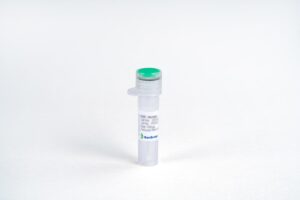
TNF-α, Porcine
$668.44 Add to cart View Product DetailsTumor Necrosis Factor-Alpha (TNF-alpha) plays a major role in growth regulation, differentiation, inflammation, viral replication, tumorigenesis, and autoimmune disease. Besides inducing hemorrhagic necrosis of tumors, TNF has been found to be involved in tumorigenesis, tumor metastasis, viral replication, septic shock, fever, inflammation, and autoimmune disease including Crohn’s disease, rheumatoid arthritis and graft-versus-host disease. TNF alpha-1a is a potent lymphoid factor that exerts cytotoxic effects on a wide range of tumor cells and certain other target cells.
-

TNF-α, Rat
$953.06 Add to cart View Product DetailsTumor Necrosis Factor-Alpha (TNF-alpha) plays a major role in growth regulation, differentiation, inflammation, viral replication, tumorigenesis, and autoimmune disease. Besides inducing hemorrhagic necrosis of tumors, TNF has been found to be involved in tumorigenesis, tumor metastasis, viral replication, septic shock, fever, inflammation, and autoimmune disease including Crohn’s disease, rheumatoid arthritis and graft-versus-host disease. TNF alpha-1a is a potent lymphoid factor that exerts cytotoxic effects on a wide range of tumor cells and certain other target cells.
-

TNF-β, Human
$1,323.94 Add to cart View Product DetailsTNF is secreted by macrophages, monocytes, neutrophils, T-cells, NK-cells following their stimulation by bacterial LPS. Cells expressing CD4 secrete TNF-alpha while CD8 cells secrete little or no TNF-alpha. The synthesis of TNF-alpha is induced by many different stimuli including interferons, IL2, GM-CSF. TNF-β is a potent mediator of inflammatory and immune responses. It belongs to the TNF family of ligands, and signals through TNFR1 and TNFR2. TNF-β is produced by activated T and B lymphocytes, and has similar activities to TNF-α. It mediates a large variety of inflammatory, immunostimulatory, and antiviral responses.
-

TPO, His, Human
$2,596.13 Add to cart View Product DetailsThrombopoietin (TPO) is a glycoprotein hormone which belongs to the EPO/TPO family. It produced by the liver and kidney which regulates the production of platelets. TPO stimulates the production and differentiation of megakaryocytes, the bone marrow cells that bud off large numbers of platelets. Lineage-specific cytokine affects the proliferation and maturation of megakaryocytes from their committed progenitor cells. It acts at a late stage of megakaryocyte development. It may be the major physiological regulator of circulating platelets.
-

TPO, Mouse
$1,651.69 Add to cart View Product DetailsThrombopoietin (TPO), also known as C-mpl ligand, MGDF and Thpo, is a glycoprotein hormone belonging to the EPO/TPO family. It is expressed mainly in the liver, kidney and skeletal muscle. TPO binds and signals through MLP/C_MPL receptor. It stimulates the proliferation and maturation of megakaryocytes from their committed progenitor cells, and it regulates the production and circulation of platelets. TPO has also been reported to promote the apoptosis of hypoxia-sensitized neurons and to inhibit neuronal differentiation.
-
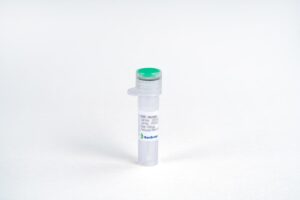
TRAIL, Mouse
$664.13 Add to cart View Product DetailsTNF-related apoptosis-inducing ligand (TRAIL), also known as Tumor Necrosis Factor Super-Family 10 (TNFSF10) or apoptosis 2 ligand (Apo2L), is a pleiotropic cytokine thatbelongs to the TNF superfamily. Full length TRAIL expressed in vivo is a type II transmembrane protein, although the soluble form also exists and functions. TRAIL has four major receptors: two death receptors DR4 and DR5, and two decoy receptors DcR1 and DcR2. TRAIL binds to the death receptors which recruits the FAS-associated death domain and activates caspases 8 and 10 which eventually leads to apoptosis. Because of its antitumor potential, TRAIL is activelystudied as a therapeutic agent. On the other hand, abnormal expression of TRAIL in small arteries can induce the proliferation of smooth muscle cells, thereby increasing vascular remodeling and pulmonary arterial hypertension.
-

TRAIL/Apo2L, Human
$552.00 Add to cart View Product DetailsTRAIL/Apo2L, also known as Tumor Necrosis Factor Super-Family 10 (TNFSF10), is a pleiotropic cytokine thatbelongs to the TNF superfamily. The full length TRAIL expressed in vivo is a Type II transmembrane protein, although the soluble form also exists and functions. TRAIL has four major receptors: two death receptors DR4 and DR5, two decoy receptors DcR1 and DcR2. TRAIL binds to the death receptors, recruits the FAS-associated death domain, activates caspases 8 and 10, and eventually leads to apoptosis. Because of its antitumor potential, TRAIL is actively studied as a therapeutic agent. On the other hand, abnormal expression of TRAIL in small arteries can induce the proliferation of smooth muscle cells, resulting in increasing vascular remodeling and pulmonary arterial hypertension.
-

trans 4-Dimethylaminocrotonic Acid-d6 Hydrochloride
$182.85 Add to cart View Product DetailsMolecular Formula : C6H6D6ClNO2
-

trans-1,2-Diphenylcyclobutane
$219.08 Add to cart View Product DetailsMolecular Formula : C16H16
-
![Trans-3,4-Bis[[(methylsulfonyl)thio]methyl]-2,2,5,5-tetramethylpyrrolidin-1-yloxyl Radical](https://advatechgroup.com/wp-content/uploads/sys-masterimagesh01h1110621131391006B486250.png)
Trans-3,4-Bis[[(methylsulfonyl)thio]methyl]-2,2,5,5-tetramethylpyrrolidin-1-yloxyl Radical
$214.76 Add to cart View Product DetailsMolecular Formula : C12 H24 N O5 S4
-
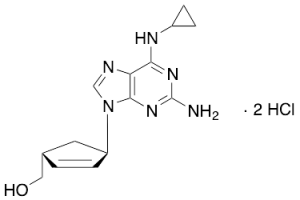
trans-Abacavir Dihydrochloride
$237.19 Add to cart View Product DetailsMolecular Formula : C14 H18 N6 O . 2HCl
-

trans-Arterolane p-Toluenesulfonic Acid
$237.19 Add to cart View Product DetailsMolecular Formula : C22H36N2O4 . C7H8O3S
-

trans-Campestanyl Ferulate
$210.45 Add to cart View Product DetailsMolecular Formula : C38H58O4
-

trans-Capsaicin-d3
$252.71 Add to cart View Product DetailsMolecular Formula : C18H24D3NO3
-
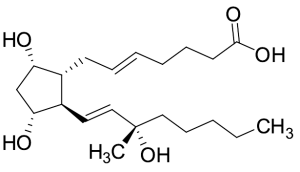
trans-Carboprost
$255.30 Add to cart View Product DetailsMolecular Formula : C21 H36 O5
-

trans-Carboxy Glimepiride
$217.35 Add to cart View Product DetailsMolecular Formula : C24H32N4O7S
-

trans-Clopenthixol-d4 (-)-10-Camphorsulfonic Acid Salt
$166.46 Add to cart View Product DetailsMolecular Formula : C22 D4 H21 Cl N2 O S . C10 H16 O4 S
-
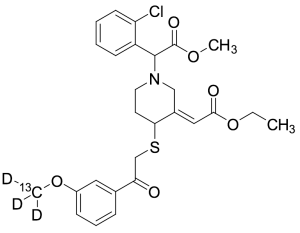
trans-Clopidogrel-MP-13C,d3 Ethyl Ester Derivative(Mixture of Diastereomers)
$275.14 Add to cart View Product DetailsMolecular Formula : C2613CH27D3ClNO6S
-

trans-Deltamethrin
$176.81 Add to cart View Product DetailsMolecular Formula : C22H19Br2NO3
-
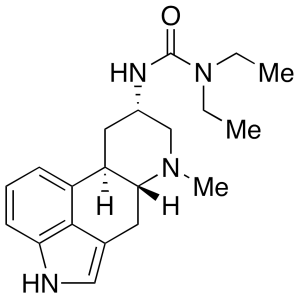
trans-Dihydro Lisuride
$264.79 Add to cart View Product DetailsMolecular Formula : C20 H28 N4 O
-

trans-Dihydro Lisuride-d10
$237.19 Add to cart View Product DetailsMolecular Formula : C20 D10 H18 N4 O
-
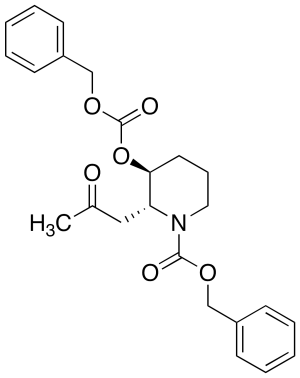
trans-N,O-Bis(benzyloxycarbonyl) 3-Hydroxy-2-(2-oxopropyl)piperidine
$182.85 Add to cart View Product DetailsMolecular Formula : C24H27NO6
-

trans,trans-Farnesyl Chloride
$176.81 Add to cart View Product DetailsMolecular Formula : C15H25Cl
-

TrkA, Human
$1,863.00 Add to cart View Product DetailsTyrosine kinase receptor A (Trk-A) is a member of the neurotrophic tyrosine kinase receptor family which includes three members: Trk-A, Trk-B and Trk-C. Trk-A is involved in the development and maturation of the central and peripheral nervous systems through regulation of proliferation, differentiation and survival of sympathetic neurons.






